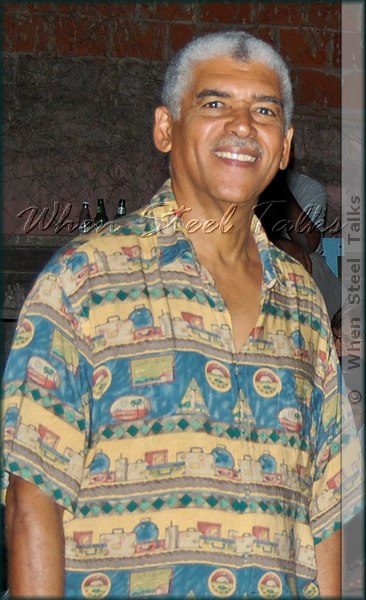Global - Now in his second consecutive year with the steel orchestra know as Skiffle, master arranger Ray Holman shares his thoughts and wisdom with When Steel Talks in an exclusive interview, as they prepare for the upcoming Trinidad and Tobago 2014 Panorama Finals.
WST - “When last we left off - your trilogy of Trinidad life, hopes and dreams concluded with “Sapna (The Dream).” This year you have added “The Wedding (Shaadi)” chapter to this part-fable, part-novel, part-reality, and when taken in its totality, could even be considered a quadrilogy or tetralogy. How did this come about?”

Ray Holman
Ray Holman - “The Wedding (Shaadi) is a natural follow-up to (The Dream) Sapna; the theme of cultural unity is dealt with on a wider scale in The Wedding. Sapna dealt basically with Penal and Laventille whereas [with] The Wedding, we have the two dominant cultural groups joined in a permanent union.”
WST - “In the musical storytelling of this piece, do you find this to be less difficult to articulate because of the subject matter?”
Ray Holman - “No. Both were equally challenging. In Sapna the East Indian element was more pronounced. In the Wedding I had to create a delicate balance between the two idioms remembering that this is virgin musical territory.”
WST - “Your two panorama compositions, “Sapna” and “Shaadi” could be thought of as being emotionally on the ‘lighter side,’ - that is, not as socially weighted as, say, “We Just Can’t Go On Like This” and “If We Really Want.” Does this mean you are a bit more optimistic about the state of affairs?”
Ray Holman - “No, but I am hopeful that these two compositions can help to bring our people together in a way that politics has failed to do. We can never underestimate the power of music as an agent of social change. Once the listener manages to free himself of whatever prejudice, intolerance or insecurity he may harbour and allow himself to be transported by the music into a realm of love and togetherness, I would have achieved my goal of a united Trinidad & Tobago.”
WST - “This is your second consecutive year with Skiffle; what are your expectations from the group?”
Ray Holman - “I expect that they would continue to grow musically and that the many young people with whom I have had the pleasure of working will blossom into musical flowers of great beauty. ”
WST -“Coming out of the semifinals Skiffle is now in position 8. What do you do to close the gap between now and your finals performance?”
Ray Holman - “For the semifinals the band was not properly prepared so with two weeks available to us before the finals to master the music I am hopeful that we would give a memorable performance.”
WST - “Your seamless marriage of different aspects of Trinidad culture - Indian, Spanish, African - within the musical confines of contemporary western civilization, translated almost into an epic movie score with the pan players as both players - and actors. Was it difficult to get management and the players to buy into your vision of what could be interpreted as a Trinidad and Tobago musical?”
Ray Holman - “No, that was never an issue as I eventually discovered that the band had been performing for a few years with an East Indian singer doing traditional East Indian music so they had some prior exposure to the genre.”WST - “What has been the most difficult part of this season thus far?”
Ray Holman - “The most difficult part of the season has been getting all the players to come together at the same time to rehearse, as they thought with a relatively long season, they had a lot of time to spare - but they underestimated the difficulty of the piece.”
WST - “50 Panoramas later, beyond experience, what is musically different about Ray Holman?”
Ray Holman - “I would classify my latest works as ‘Ray Holman - New Edition’ although since 1989 when I composed ‘My Band’ for then-Carib Tokyo, I had been experimenting with East Indian rhythms and idioms. I grew up in Woodbrook and had many friends in St. James who were involved in the Hosay festival. I became familiar with tassa drumming, so all of this became second nature to me. So the preoccupation with East Indian musical forms has become more pronounced in my music.”
WST - “What would you like the audience to leave with after experiencing your piece, live with Skiffle?”
Ray Holman - “I would like them to leave feeling the possibility of cultural unity and realizing the beauty of our diversity whilst at the same time eschewing all intolerance and bigotry.”
WST - “You have had so many great panorama music works over the years. Where does “The Wedding (Shaadi)” rank?”
Ray Holman - “I think it ranks very high on the list because of its innovative form and the substance of its musical content.”
WST - “Anything additional you would like to touch on?”
Ray Holman - “I hope that these two works would serve as an inspiration to others to recognize that all our different cultural traditions have equal value and can provide adequate material for an all encompassing musical tapestry.”
Click for more on Ray Holman
Click for WST’s Trinidad and Tobago Panorama 2014 coverage
Leave a comment in the WST forum






